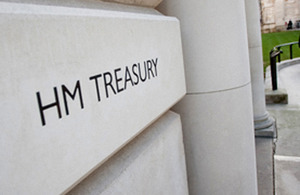Government introduces bank levy
The Government today introduced a permanent levy on banks’ balance sheets.

The Government today introduced a permanent levy on banks’ balance sheets as it believes that banks should make a full and fair contribution in respect of the potential risks they pose on the wider economy.
Once fully in place the levy is expected to raise around £2½ billion of annual revenues. This is in line with the Budget estimates.
The levy is intended to encourage banks to move to less risky funding profiles, and the £2½ billion is a fair contribution in respect of the risks the banking system poses to the wider economy, while ensuring that the industry remains competitive.
The rate for 2011 will be 0.05 per cent, and it will rise to 0.075 per cent from 2012 onwards.
The government has consulted on the design of the scheme so that it achieves two objectives: first, ensuring that banks make a fair contribution in respect of the potential risks they pose to the UK financial system and wider economy. Second, the final scheme design will encourage the banks to make greater use of more stable sources of funding, such as long-term debt and equity, working with the grain of our wider reform programme.
Financial Secretary to the Treasury, Mark Hoban said:
The levy which comes into force today means that banks will now make a full and fair contribution in respect of the potential risks they pose to the wider economy. This measure will also encourage banks to reduce their dependence on the riskier, short term funding that was one of the main causes of the financial crisis.
Once fully in place the bank levy is set to raise £2.5 billion per annum and this will go towards helping reduce the record Budget deficit that this Government inherited.
Notes for Editors
-
In the June Budget, the Government announced that it would introduce a levy based on banks’ balance sheets from 1 January 2011, intended to encourage banks to move to less risky funding profiles.
-
View the initial consultation document, the Government’s response to the consultation and the draft legislation.
-
Following two periods of consultation since June, the final legislation contained changes to the detailed design and rate of the levy. The rate for 2011 will be 0.05 per cent, rather than 0.04 percent, and it will rise to 0.075 per cent from 2012, instead of the 0.07 per cent announced in June. This change in rate reflects changes to the detailed design of the levy, in particular extending the half rate treatment (for longer maturity liabilities) to cover retail deposits not covered by deposit insurance or guarantees, and the introduction of an allowance, rather than a threshold, for those liabilities to which the levy applies. With these changes the levy will generate around £2½ billion of annual revenues, which is in line with the Budget estimates.
-
In addition to introducing a bank levy, the Government is taking action to tackle unacceptable bank bonuses. The Independent Commission on Banking will look at structural and non-structural measures to reform the banking system and promote competition. What’s more, working with international partners, the Government is exploring the costs and benefits of a Financial Activities Tax on profits and remuneration. Separately, the Financial Services Authority (FSA) has today introduced its revised remuneration code, which will ensure bonuses for material risk-takers are deferred over a number of years and are linked to the performance of the employee and their firm. Significant portions of these bonuses will have to be paid in shares or other securities.
Non-media enquiries should be addressed to the Treasury Correspondence and Enquiry Unit on
020 7270 4558 or by e-mail to public.enquiries@hm-treasury.gov.uk
Media enquiries should be addressed to the Treasury Press Office on 020 7270 5238.